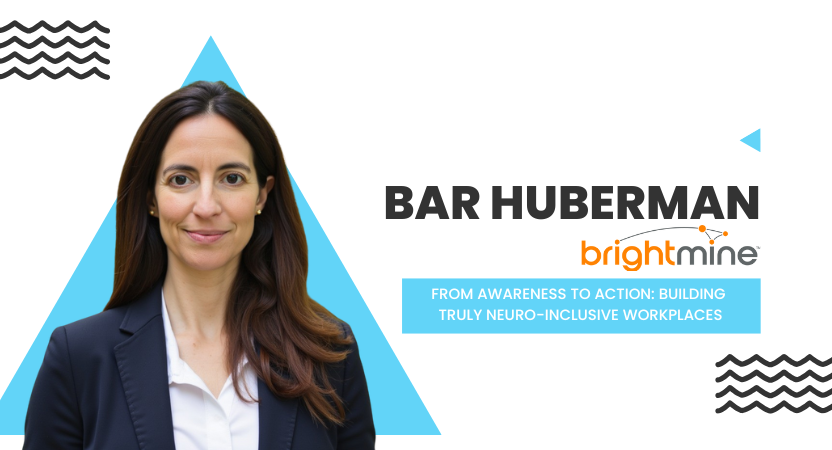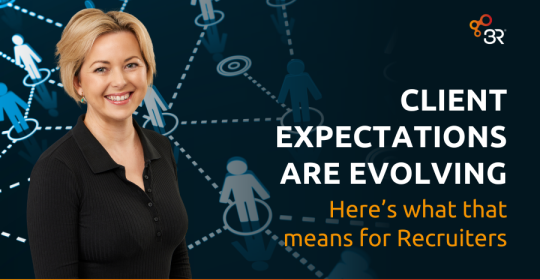We've seen some good progress in raising awareness of neurodiversity in the workplace in recent years. The percentage of UK job postings referencing neurodiversity rose from just 0.3% in January 2019 to 2.1% in October 2024, indicating that more organisations recognise the unique strengths that neurodivergent thinkers bring to the workplace.
However, while awareness is a step in the right direction, the reality is that many neurodivergent individuals continue to experience considerable obstacles in the workplace, from the interview process to professional development and career advancement.
Creating an inclusive workplace requires intentional cultural change, adjustments in recruitment practices, communication methods, and performance evaluation as well as ongoing effort throughout the organisation. The good news is that there are steps employers can take to create the environment that allows neurodivergent employees to thrive.
Gaps in neurodiverse recruitment
There have been great strides in making recruitment processes more effective overall, but for neurodivergent candidates, inclusivity is lagging. The use of abstract competency questions and fast-paced group interviews, and the growing use of AI evaluation tools often create challenges for those who process information or communicate differently, such as misunderstanding or anxiety. It may also lead to a greater risk of bias.
Applicants with autism, for example, might struggle to interpret open-ended or vague questions or feel overwhelmed by group presentations and unstructured assessments. A candidate with dyslexia might be a very strong applicant but fail an assessment if it’s a written exercise and no alternatives or support is provided. Unless recruitment teams make adjustments and consider alternative ways to assess potential talent, they could miss out on great candidates.
To rethink recruitment, businesses should start with a simple question: “Does our recruitment process allow everyone to perform at their best?” Potential adjustments to think about include providing interview questions ahead of time, offering breaks between stages to prevent sensory overload, and ensuring that job advertisements use clear and simple language. Clear statements during the recruitment process that reasonable adjustments will be made go a long way towards building trust, reducing anxiety and giving everyone a fair chance of success.
Day-to-day inclusion: Empowering neurodivergent employees in the workplace
Neuro-inclusion is not only relevant at the recruitment stage; it is also important to consider how neurodivergent staff members are being supported after they have joined the organisation. Line managers play a key role in this. Their approach can determine whether an employee thrives in their role or faces ongoing challenges.
Managers who provide clear instructions and guidance, avoiding jargon and ambiguity, tend to develop a stronger, more stable rapport with neurodivergent employees, and enable their success.
It is also important for managers to offer support proactively instead of waiting for individuals to disclose a condition. Some people may be reluctant to share a diagnosis, and others may not have a formal one.
It is common for adults to discover their neurodivergence later in life, often after years of feeling that they can’t “fit in” at work. By establishing safe spaces, including a culture of line managers having regular conversations with their team where employees feel able to share their thoughts, employers can build an environment in which everyone can thrive.
Gaining leadership buy-in: Prioritising neurodiversity in business
To create real change, neuro-inclusion needs to be embedded into organisations’ wider people strategy rather than a one-off initiative, and for this to happen, senior leadership buy-in is essential. Senior leaders need to understand the strategic value of neuro-inclusion and the positive impact it can have on business. Research shows that neurodivergent employees often bring incredible problem-solving ability, creativity, logical thinking and attention to detail; skills that many industries are struggling to find in a tight labour market. Moreover, inclusivity optimises employee engagement, boosts retention and drives innovation.
Further, where leaders recognise that inclusion is valuable, they will be more likely to model inclusive behaviours and encourage change within their organisation.
To ensure long-term success, executives should take advantage of people data to track whether their neurodiversity efforts are working and what can be improved. This can help to create a better employee experience and make sure the organisation is taking the right action.
A culture change: Embracing diversity
True inclusion goes beyond the notion that everybody works, thinks or acts in the same way. It's about reimagining the workplace, breaking down outdated norms and creating a culture in which diverse thinking is actively encouraged. By empowering neurodivergent individuals, organisations can reap rewards such as improved problem-solving and create workplaces in which all minds can thrive.






